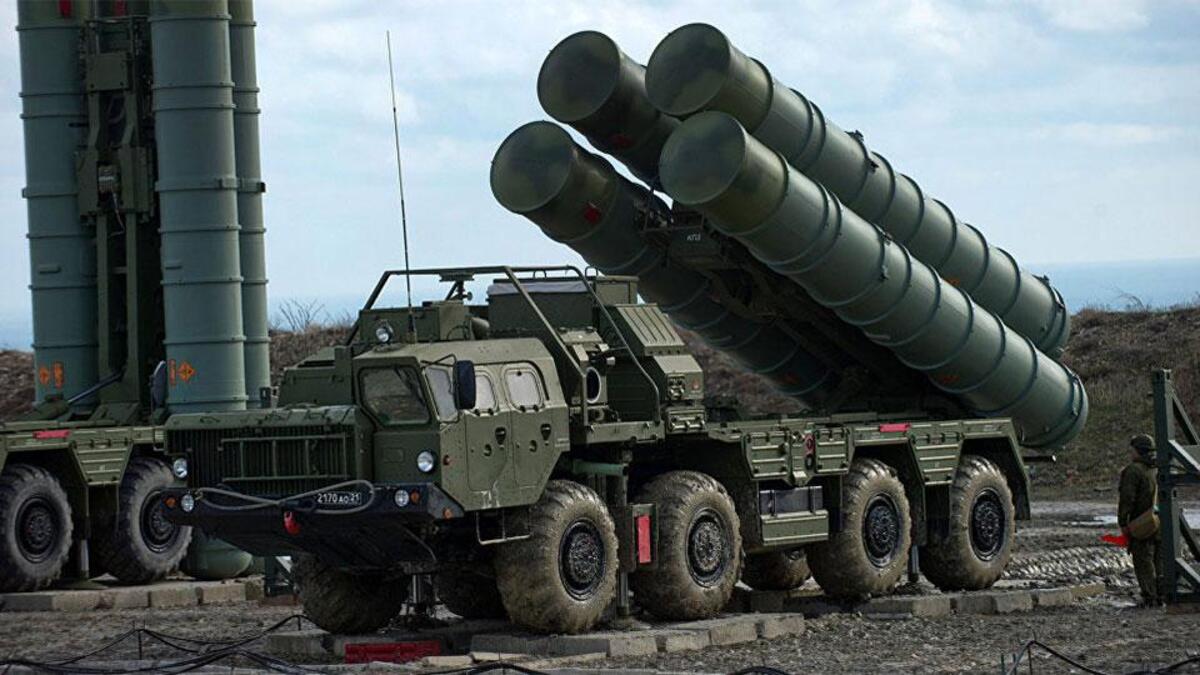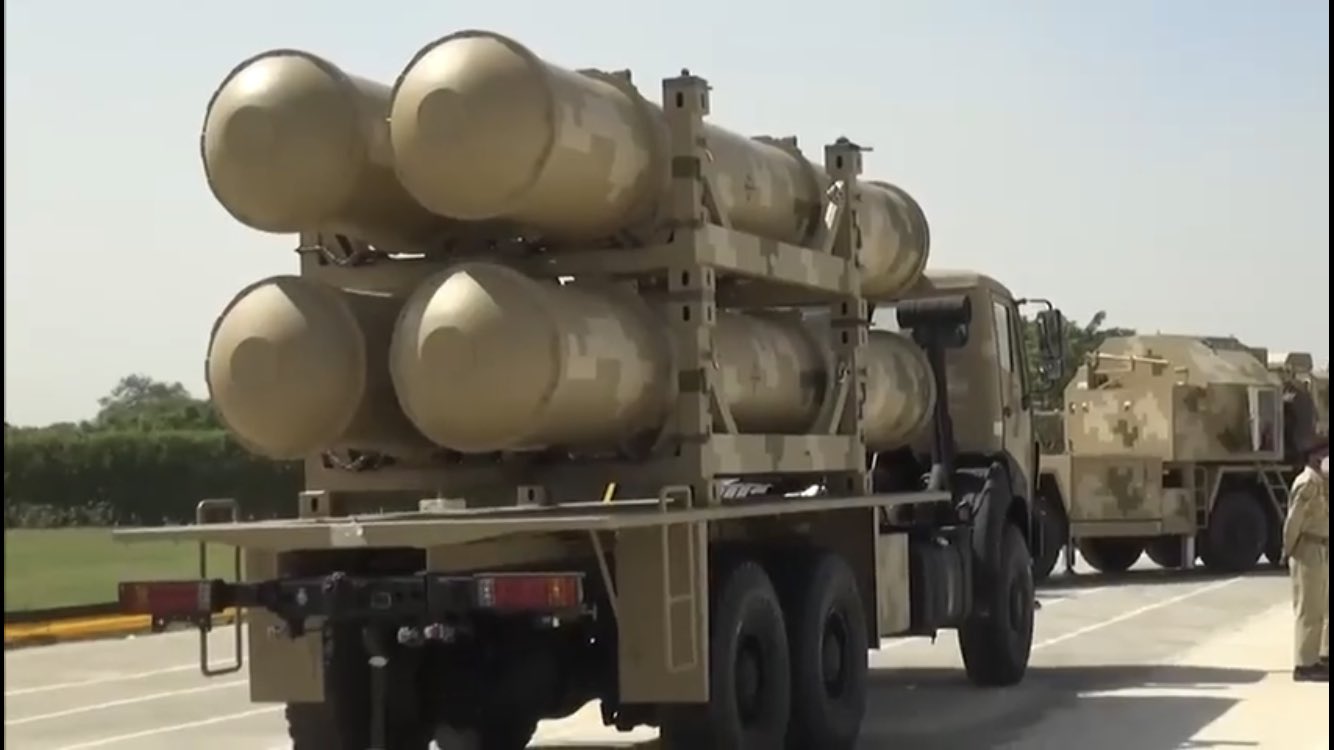The first batch of India’s newly acquired S-400 Triumf missile defense systems will be made operational by April this year, according to the latest reports. The Russian-made air defense systems have already been moved to the Indian province of Punjab which borders Pakistan.
Battle Of Stealth Jets: Challenging F-22 Raptors, China To Amplify Thrust Vectoring Capabilities Of Its J-20 Fighters
Earlier, various media outlets reported that the S-400 missile batteries were stationed at one of the five Indian Air Force (IAF) bases in the state, which borders Pakistan and is also close to the Line of Actual Control (LAC), the disputed border with China.
Interestingly, China is already in possession of S-400s, which the communist country has reportedly deployed in Xinjiang and Tibet regions, just across Ladakh and Arunachal Pradesh respectively, amid the border standoff with India.
Boosting India’s Air Defense
India’s deployment of the S-400 is aimed at boosting the country’s air defense capability. It is touted as one of the most sophisticated systems of its kind in the world.
With a range of 400 km, the S-400 Triumf has the ability to shield its air defense bubble (the area it can protect) against various weapons such as rockets, missiles, cruise missiles, and even aircraft.
Russian officials have stated that the delivery of the first unit had started in November last year.
Not only are defensive abilities such as anti-access, area-denial capabilities of the S-400 quite noteworthy, but its potential offensive abilities also appear to be formidable.
The system provides layered coverage via a combination of the 40-kilometer-range 9M96E, 120-kilometer-range 9M96E2, 250-kilometer-range 48N6, and the 400-kilometer-range 40N6E missiles. Such a concentric circle of defense enables the S-400 to protect large areas, high-value targets as well as the system itself from potential attacks.

The S-400 Triumf is highly mobile in nature. It can be made operational just five minutes after arriving at a new location. This offers the benefit of easier and more frequent relocation, making detection by adversaries much more difficult.
Another salient feature of the system is its potential offensive capability. This can apparently restrict an adversary’s use of their own airspace. In the case of Pakistan, due to its geographical position and the long border it shares with India, the S-400 would cover most of the nation.
Does Pakistan Have Any Countermeasures?
This begs the question- what strategies and weapons does Pakistan have in its arsenal to counter the S-400s?
Peshawar-based journalist and editor of Global Conflict Watch, Farzana Shah told The EurAsian Times that the “S-400 acquisition by India is a continuation of Delhi’s drive to project her military power in the region. This system will boost Indian air defense capabilities. However, this acquisition was planned and so Pakistan was aware of it.”
Shah said that as an answer to India’s acquisition of this system, Pakistan has inducted a system of similar capability in the form of HQ-9B. “Pakistan Air Force is also evaluating another high-altitude long-range SAM system. S-400 is an expensive ABM system so using it as SAM will be expensive and counterproductive,” she opined.
Mid-October last year, Janes had reported that the Inter-Services Public Relations (ISPR), the media wing of the Pakistani military, had issued a press release stating that the Pakistan Army’s (PA) Air Defence forces had inducted a variant of the Chinese-made HQ-9 SAM system in their service.

The HQ-9/P is capable of operating as part of an integrated air and missile defense network. The ISPR noted that the system would be used to “significantly enhance” the ‘Comprehensive Layered Integrated Air Defence (CLIAD)’ along the frontiers of Pakistan.
This system’s engagement range against cruise missiles and aircraft is over 100 kilometers with a claimed high “single-shot kill probability.” However, it is believed that this range actually applies only to aircraft. Engagement ranges against cruise missiles and other such targets are thought to be close to 25 km.
Pakistani journalist Syed Ali Abbas, Managing Editor of Global Defense Insight, said that while Pakistan cannot afford to buy a costly missile defense system like S-400 due to economic constraints, the country already has the tools to counter India’s S-400 acquisition in its inventory.

“For instance, Pakistan’s missiles have the capability to penetrate the S-400; MIRV technology can have a substantial impact on S-400. Moreover, with drones coming to assist on the battlefield, and proving to be notably effective in neutralizing various air defense systems, Pakistan also has the option of the Pakistan Air Force acquiring Turkish Bayraktar drones, coupled with its indigenous armed drone inventory,” he explained.
In July last year, it was reported that Pakistan was looking to acquire armed drones from Turkey, while simultaneously seeking to deepen the already strong bilateral cooperation with Ankara.
Shah highlighted other strategies that the PAF has to deal with the S-400. “Options range from suppressing S-400 radar using stand-off jamming capabilities to taking it out using saturated drone attacks. The system’s radar can pick hundreds of targets but each regiment has only a limited number of interceptor missiles.“
Another weapon that Pakistan could potentially use to deal with the S-400 is the ZF-1 stealth drone. This drone was made specifically to attack heavily defended targets. The drone was promoted at Pakistan’s biennial arms exhibition IDEAS in 2018 by UAS Global.
According to some experts, Pakistan might also benefit indirectly by holding joint military exercises with friendly countries, which already possess the S-400, such as China and Turkey. Such drills might assist in helping Pakistan identify the system’s strengths and weaknesses.
Thus, it appears that the S-400 does not put either of India’s rivals at a heavy advantage or disadvantage. On this, Miguel Miranda, founder of the Philippines-based defense industry resource ‘The 21st Century Asian Arms Race’, told the EurAsian Times, “The S-400 theater air defense system is arguably the best of its kind in the world. But I must insist it doesn’t change any ‘equation’ on either side of the Line of Control. Furthermore, it’s a defensive system meant to protect large swathes of national territory from airborne threats. For decades India has needed such an umbrella over its capital and other vulnerable regions.“
He went on to highlight a challenge that India has to face, stating that even with fully deployed S-400, there are still yawning gaps left in the country’s airspace, calling this “unfortunate but inevitable.” He explained that India’s size and varied climate make assembling a near-permanent air defense grid a long and expensive task.
“This is why I have hope for the DRDO’s ongoing efforts with the XR-SAM and various tactical missiles as these will help deter India’s rivals in the long run,” Miranda said before signing off.
- Contact the author at: shreyya.mundhra@gmail.com
- Follow EurAsian Times on Google News




